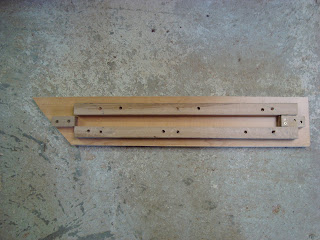On a practice drive to the school one time I missed the turn off and I ended up driving to the next town over, Gachie, a small, crowded town where I found the driving very difficult with so many people and bikes on the sides of the narrow road. I was worried about hitting someone so I went super slow and eventually did a U-turn. The next day, I asked a friend's driver to show me the turn off that I had missed, and told him how I had driven to Gachie, which is actually not that far away.
"Gachie? You went to Gachie?" he said, in a funny tone of voice.
"Yes. Is there something bad about Gachie?" I asked.
"That's where a lot of carjackers come from."
"Oh." I laughed nervously. "Does this mean you wouldn't go to Gachie?"
"Well, I have been there before, but I would not feel comfortable living there. There are more Mungiki there than in other areas."
"Mungiki?"
"They are sort of like...a criminal gang..." [see http://news.bbc.co.uk/2/hi/africa/6685393.stm and http://www.reuters.com/article/2007/07/01/us-kenya-gang-idUSHUL13001020070701?pageNumber=2]
"I was very nervous because there were so many people crowding the road and I didn't want to hit anybody."
"If you do have an accident, even if it's completely not your fault, you should not stay in the area."
"Why not?"
"Because they might beat you, or lynch you, or torch your car."
"Oh. So I should leave right away?"
"Yes, and drive to the police station or another safe place to call the police and report the accident."
That discussion certainly made me feel excited about driving. Gachie did not look so bad in daylight. The advice about leaving the scene of an accident seems odd but is probably true. Just last weekend there was a story in the newspaper about some young men from Gachie who had gone out drinking, and while walking around at night, one of them was hit by a car. When the driver of the car got out to check on the victim, the victim's friends threatened to beat him up. Scared, the driver jumped back in his car and sped away to a police station to report the accident. Unfortunately, the victim died, and it is not clear if the friends, some of whom are now missing, did anything to try to help.
In the meantime, my driving, which was slow and shaky here to start with, has been improving every day. I drove M. to school and K. to work one day recently. K. complimented me on my ability to keep up with the local traffic speed: "You've moved on from the Glacial Pace of Infinite Fear" he said with admiration. This was followed by the ultimate praise, something that every driver likes to hear from her passengers: "I wasn't even scared once."

















































